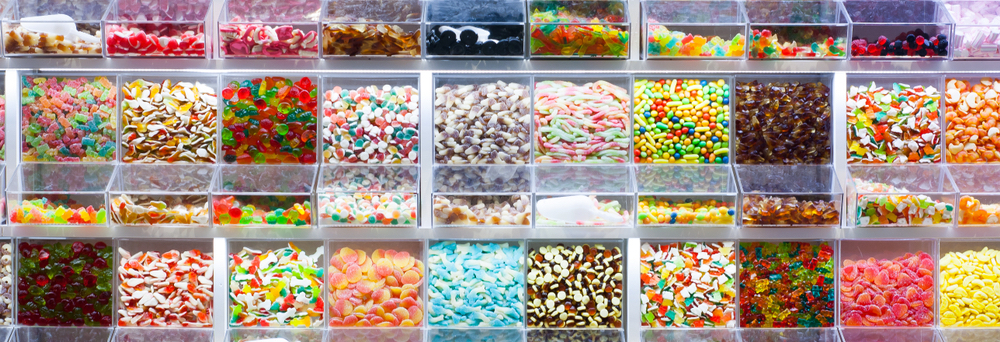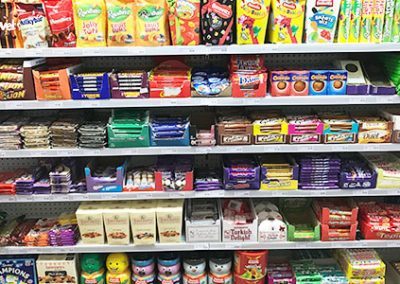The Definitive Guide to I Luv Candi
The Definitive Guide to I Luv Candi
Blog Article
I Luv Candi Things To Know Before You Buy
Table of ContentsThe Only Guide to I Luv CandiI Luv Candi for BeginnersThe I Luv Candi PDFsWhat Does I Luv Candi Do?Some Known Details About I Luv Candi
We've prepared a great deal of service strategies for this kind of job. Here are the usual consumer segments. Customer Segment Description Preferences Exactly How to Find Them Kids Youthful customers aged 4-12 Colorful candies, gummy bears, lollipops Companion with neighborhood colleges, host kid-friendly events Teenagers Teenagers aged 13-19 Sour sweets, uniqueness things, stylish treats Engage on social media, collaborate with influencers Moms and dads Adults with young kids Organic and much healthier alternatives, nostalgic sweets Deal family-friendly promotions, advertise in parenting magazines Students College and college trainees Energy-boosting candies, affordable snacks Partner with neighboring schools, advertise during exam durations Present Buyers People seeking presents Premium chocolates, gift baskets Develop appealing display screens, offer customizable gift options In evaluating the economic dynamics within our candy store, we have actually discovered that customers usually spend.Monitorings suggest that a common customer frequents the store. Certain periods, such as vacations and special events, see a surge in repeat brows through, whereas, throughout off-season months, the regularity may diminish. pigüi. Calculating the lifetime worth of a typical client at the candy shop, we approximate it to be
With these elements in factor to consider, we can reason that the typical income per customer, over the program of a year, hovers. The most lucrative clients for a sweet shop are often households with young youngsters.
This demographic tends to make constant purchases, raising the shop's profits. To target and attract them, the candy shop can employ vivid and playful marketing techniques, such as vibrant display screens, catchy promos, and possibly also organizing kid-friendly occasions or workshops. Developing an inviting and family-friendly environment within the shop can likewise improve the overall experience.
Some Known Details About I Luv Candi
You can likewise approximate your very own profits by using various presumptions with our economic prepare for a sweet shop. Ordinary month-to-month income: $2,000 This sort of candy store is commonly a small, family-run business, probably understood to locals but not attracting large numbers of travelers or passersby. The store may supply an option of typical sweets and a few homemade treats.
The store doesn't generally bring uncommon or pricey products, focusing rather on inexpensive treats in order to maintain regular sales. Assuming a typical investing of $5 per client and around 400 clients monthly, the monthly income for this candy shop would certainly be around. Ordinary month-to-month revenue: $20,000 This sweet-shop gain from its critical area in a hectic metropolitan location, bring in a multitude of consumers seeking pleasant extravagances as they go shopping.
In enhancement to its diverse candy choice, this store may also market relevant items like present baskets, candy bouquets, and uniqueness items, supplying numerous earnings streams - carobana. The shop's place requires a greater allocate rental fee and staffing yet results in higher sales quantity. With an estimated typical costs of $10 per client and concerning 2,000 clients monthly, this store might create
What Does I Luv Candi Mean?
Situated in a significant city and traveler destination, it's a large facility, commonly spread over numerous floors and possibly part of a national or international chain. The store supplies an enormous selection of candies, including special and limited-edition things, and product like top quality clothing and devices. It's not simply a store; it's a destination.
The functional prices for this kind of shop are considerable due to the location, dimension, staff, and features provided. Presuming an ordinary acquisition of $20 per consumer and around 2,500 customers per month, this front runner store can achieve.
Group Instances of Expenditures Ordinary Regular Monthly Price (Variety in $) Tips to Decrease Costs Rent and Utilities Store rent, electrical power, water, gas $1,500 - $3,500 Consider a smaller sized location, bargain lease, and make use of energy-efficient illumination and home appliances. Stock Sweet, snacks, product packaging materials $2,000 - $5,000 Optimize inventory administration to lower waste and track preferred items to prevent overstocking.
Marketing and Advertising Printed materials, on the internet advertisements, promos $500 - $1,500 Emphasis on affordable electronic advertising and make use of social media platforms completely free promotion. da bomb. Insurance Service liability insurance $100 - $300 Look around for affordable insurance policy prices and consider bundling plans. Devices and Upkeep Sales register, show racks, repairs $200 - $600 Buy pre-owned devices when feasible and do regular upkeep to expand equipment lifespan
The smart Trick of I Luv Candi That Nobody is Talking About
Charge Card Processing Fees Costs for refining card settlements $100 - $300 Negotiate reduced handling fees with repayment cpus or explore flat-rate alternatives. Miscellaneous Workplace supplies, cleansing materials $100 - $300 Acquire in bulk and seek discounts on supplies. A sweet-shop becomes successful when its complete income surpasses its overall fixed expenses.

A large, well-located candy shop would clearly have a higher breakeven factor than a tiny store that does not require much income to cover their expenditures. Interested about the profitability of your candy store?
Some Known Details About I Luv Candi

Economic slumps that reduce consumer costs can influence candy store sales and success, making it vital for sweet shops to manage their costs and adjust to altering market problems to stay profitable. These risks are commonly consisted of in the SWOT evaluation for a sweet-shop. Gross margins and net margins are crucial indicators made use of to evaluate the success of a sweet-shop company.
Basically, it's the revenue continuing to be after deducting expenses straight pertaining to the candy inventory, such as purchase expenses from suppliers, production expenses (if the candies are homemade), and personnel incomes for those associated with production or sales. Net margin, alternatively, consider all the expenses the sweet-shop sustains, including indirect prices like administrative costs, advertising and marketing, lease, and taxes.
Candy stores usually have an average gross margin.For circumstances, if your sweet-shop earns $15,000 each month, your gross revenue would be about 60% x $15,000 = $9,000. Let's illustrate this with an instance. Think about a sweet shop that offered 1,000 sweet bars, with each bar priced at $2, making the total revenue $2,000. The shop incurs expenses such as purchasing the sweets, energies, and salaries for sales personnel.
Report this page